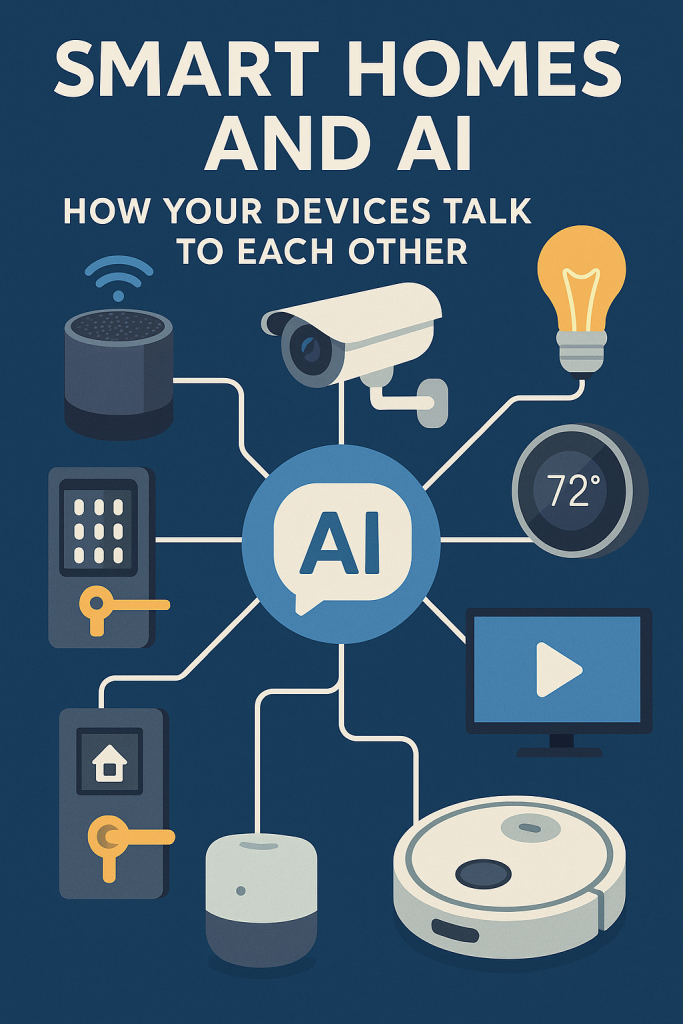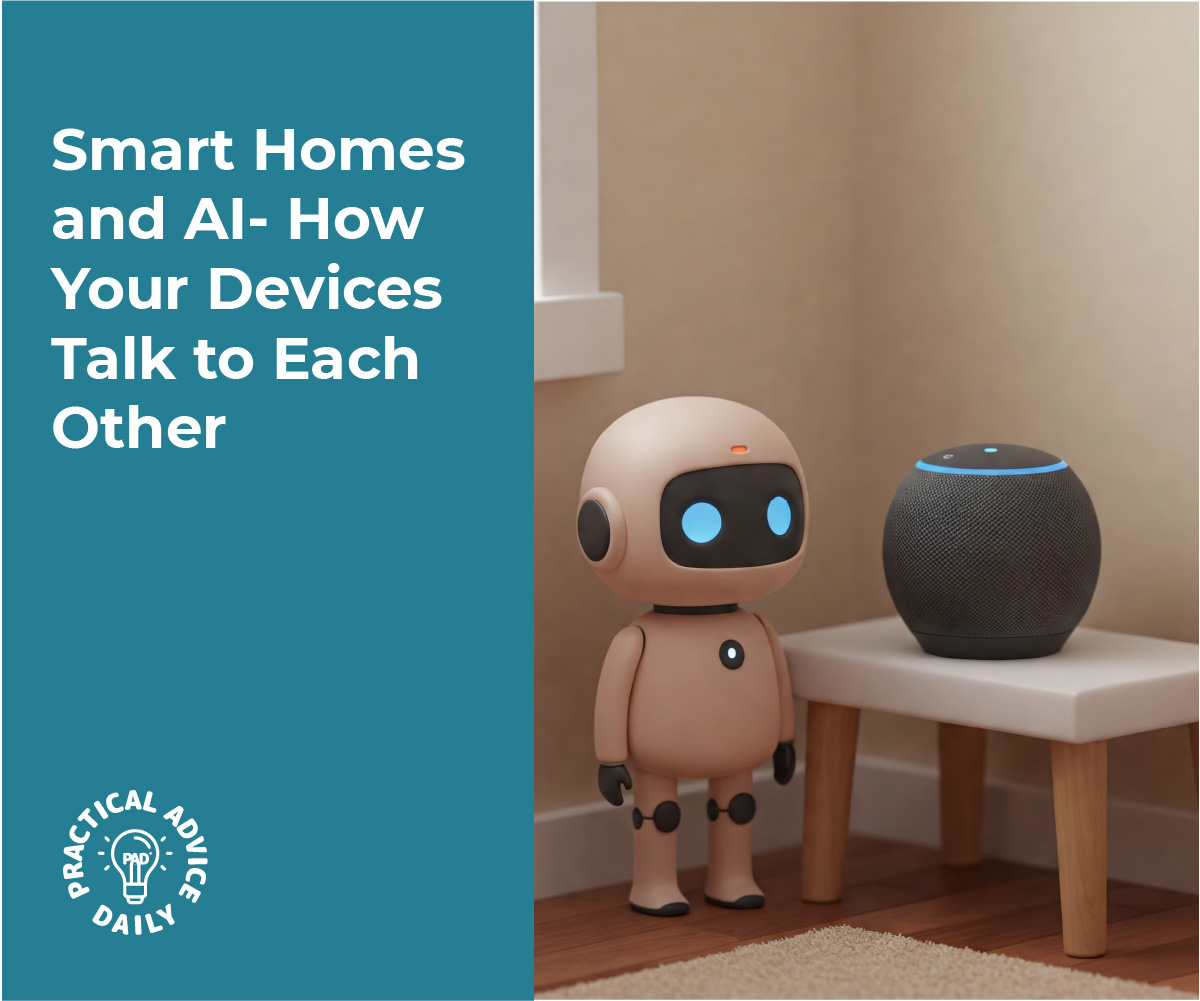Smart homes may sound like something from a sci-fi movie, but they’re actually becoming part of everyday life. You don’t need to be tech-savvy to understand how they work—or how they can make your life easier. In this article, we’ll explain how common smart devices like thermostats, lights, and security systems connect and “talk” to each other using simple AI (artificial intelligence) tools. It’s easier than you think, and we’re here to walk you through it, step by step.
Table of Contents
Key Takeaways
- Smart devices like thermostats, lights, and cameras can work together using AI.
- These systems learn your routines to help save energy and improve safety.
- You can control many smart home features using your voice or a phone app.
- No complex setup is required—many devices are “plug and play.”
How It All Works: A Simple Explanation
What is AI in a Smart Home?
Think of AI (short for artificial intelligence) as a little helper inside your devices. It learns what you like and helps things run smoothly. For example, it might notice you turn off the lights at 10 PM every night—and then start doing it for you.
Thermostats That Think for You
A smart thermostat like the Nest or Ecobee doesn’t just control temperature—it learns your schedule.
Example:
- Leave the house at 8 AM? It’ll lower the heat to save energy.
- Come home at 6 PM? It’ll start warming things up before you walk in.
Over time, it learns when you’re usually home or away, and adjusts automatically.

Smarter Lights That Fit Your Routine
Smart lights, such as Philips Hue or LIFX, can do more than just turn on or off. You can:
- Set them to dim in the evening for a relaxing mood.
- Have them turn on when you enter a room (with motion sensors).
- Use voice commands: Just say “Turn off the bedroom light” using a smart speaker like Alexa or Siri.
Bonus: You can schedule lights when you’re away, making it look like someone’s home.
Smarter Security for Peace of Mind
Smart security systems include cameras, motion sensors, and doorbells (like Ring or Arlo). But it’s how they talk to each other that makes them powerful.
Example:
- If your security camera sees movement at night, it can tell your porch light to turn on.
- If your smart doorbell is pressed, your phone gets an alert—with a live video feed.
- You can even unlock your front door remotely if someone you trust needs to come in.
How These Devices “Talk” to Each Other
This happens through a home hub or app. Think of it as a translator that helps devices work together.
Popular options include:
- Apple Home (uses Siri)
- Amazon Alexa
- Google Home
You don’t have to control everything manually. The AI learns from your habits and connects the dots to help your home run itself.
Everyday Benefits You’ll Notice
- Convenience: No need to adjust things constantly.
- Safety: Get alerts and control your home even while traveling.
- Savings: Lower energy bills by not heating or lighting empty rooms.
- Comfort: Lights and temperature just how you like them—automatically.
Final Thoughts
You don’t need to be a tech expert to enjoy a smart home. With just a few devices and a simple app, you can make daily life easier, safer, and more comfortable. Start small—maybe a smart light or thermostat—and see how helpful it can be. Want to learn more? Check out our beginner’s guides to smart speakers, voice assistants, or choosing the best devices for your home.
